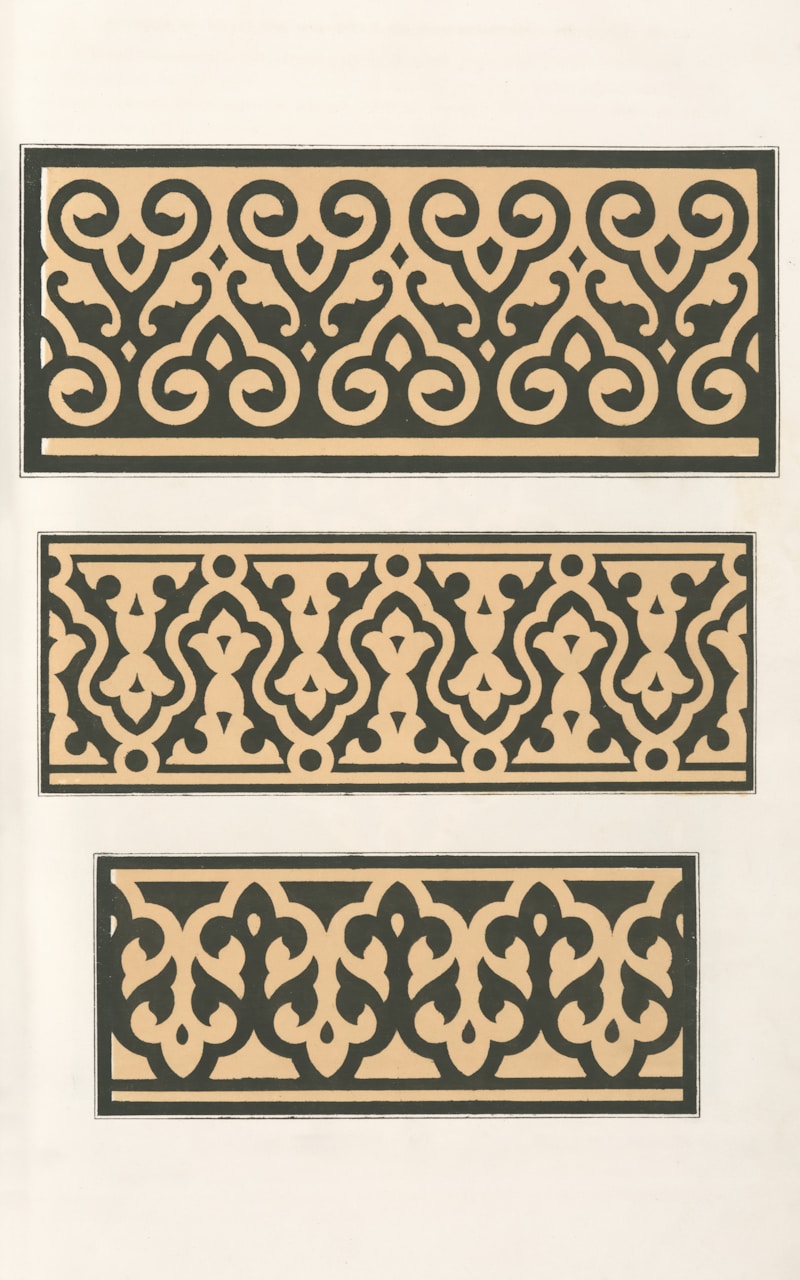Elegant Vintage Patterns Making a Comeback: Embracing Timeless Style
Elegant Vintage Patterns Making a Comeback: Embracing Timeless Style
In recent years, there has been a remarkable resurgence in the popularity of elegant vintage patterns. Designers, fashion enthusiasts, and homeowners alike are turning to these exquisite designs that echo the charm of bygone eras. From floral motifs to intricate geometric shapes, vintage patterns are making a comeback and becoming staples in modern aesthetics.
Why Are Vintage Patterns So Popular?
One might wonder why these patterns, reminiscent of times past, are experiencing a revival. The reasons are manifold:
- Nostalgia: In uncertain times, people often seek comfort in nostalgia. Vintage patterns evoke memories and feelings associated with simpler times.
- Unique Aesthetics: Vintage patterns offer a unique appeal that stands out in a world dominated by minimalism and modernity. Their intricate designs bring character and warmth to any space.
- Eco-friendliness: Embracing vintage allows a more sustainable approach to fashion and design, encouraging the reuse and appreciation of existing materials.
- Diversity: With a variety of patterns from different eras, there’s something for everyone, making it easy to incorporate into personal style.
Types of Elegant Vintage Patterns
Various vintage patterns are making headlines in contemporary design discussions. Let’s explore some of the most popular ones:
| Pattern Type | Description |
| Floral | Romantic designs featuring flowers, leaves, and other botanical elements. |
| Geometric | Patterns with repeated shapes such as triangles, hexagons, and circles. |
| Damask | Complimentary textile patterns usually woven into the fabric, characterized by its intricate motifs. |
| Art Deco | Bold shapes, rich colors, and luxurious materials embody the opulence of the 1920s and 30s. |
| Checks and Plaids | Classic patterns that convey a sense of tradition and warmth, perfect for home textiles. |
How to Incorporate Vintage Patterns into Modern Design
Now that you know why elegant vintage patterns are making a comeback, you might be wondering how to seamlessly integrate them into your space or wardrobe. Here are some tips:
1. Start Small
If you're hesitant about fully committing to vintage patterns, consider starting with smaller accents. Throw pillows, curtains, or even a vintage-patterned rug can introduce these designs without overwhelming your space.
2. Mix and Match
Combine vintage patterns with contemporary designs for an eclectic look. Pairing a floral vintage pattern with modern furniture can create a stunning contrast that feels fresh and timeless.
3. Use Vintage Wallpaper
One of the most effective ways to make a statement is through vintage wallpaper. Choose a bold geometric design for an accent wall or explore floral options to create a cozy atmosphere.

4. Accessorize with Fashion
In fashion, vintage patterns can be incorporated through clothing, bags, and accessories. A vintage floral dress or a geometric print scarf can add sophistication and flair to your outfit.
Iconic Vintage Patterns and Their Origins
Understanding the origins of famous vintage patterns can enhance your appreciation for them. Here are a few noteworthy examples:
1. Chintz
Chintz is characterized by its floral designs on a glossy cotton fabric. Originating from India, this pattern became highly popular in Europe during the 17th century. It was often used for upholstery and drapery, bringing a sense of elegance and vibrancy.
2. Toile de Jouy
This French fabric features picturesque scenes in a single color on a white or off-white background. Its designs often depict idyllic rural landscapes and pastoral life, creating a romantic and nostalgic feel.
3. Argyle
Originating from Scotland, argyle patterns are characterized by their diamond shapes, often in vibrant color combinations. Initially used for knitwear, its classic appeal has made it a popular choice in both fashion and home décor.
Common Questions About Vintage Patterns
As the interest in elegant vintage patterns grows, many people have questions regarding their application and care. Here are some common inquiries:
1. Are vintage patterns out of style?
Not at all! Vintage patterns are very much in vogue. They are a great way to showcase individuality and narrative in design choices.
2. How can I care for vintage fabrics?
When caring for vintage fabrics, always check the labels for specific washing instructions. Generally, hand washing in cold water and air drying is recommended to preserve the integrity of the fabric.
3. Can vintage patterns be used in professional settings?
Yes! Many elegant vintage patterns can be quite sophisticated and appropriate for professional environments, especially when used conservatively or paired with neutral colors.
Conclusion: Embracing the Charm of Vintage Patterns
Elegant vintage patterns are undeniably making a comeback, offering a delightful blend of nostalgia and charm. Whether you choose to incorporate them into your home décor or your wardrobe, these timeless designs allow for a personal expression that resonates with history and creativity. As you embark on your journey to embrace vintage patterns, remember to start gradually and mix them with contemporary styles for a fresh approach. Enjoy the process of weaving elegance back into your life!
So, take a step into the past and allow your personal style or living space to reflect the beauty of elegant vintage patterns. Happy decorating!
